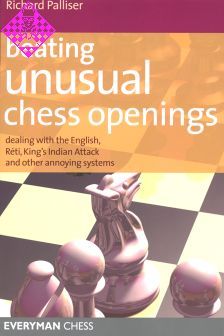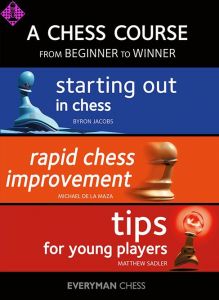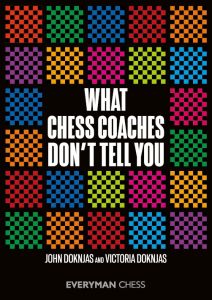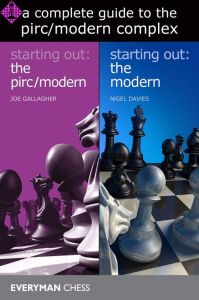Artikelnummer
LOPALBUCO
Autor
Beating unusual chess openings
dealing with English, Reti ....
223 Seiten, kartoniert, Everyman, 1. Auflage 2007
Final vergriffen
Are you afraid of the unknown?
Do you fall to pieces if your opponent plays something strange in the opening?
Here's some good news...
Beating Unusual Chess Openings is a godsend to those chess players fed up with struggling against all of White's opening moves other than the main two: 1 e4 and 1 d4. From the respectable (English Opening, Reti and King's Indian Attack) through to the offbeat (Nimzo-Larsen Attack, Bird's Opening) and the totally bizarre (Orang-Utan, Grob); everything Black needs to know about facing unusual openings is covered within these pages. Richard Palliser gets to grips with all of White's possibilities, organizing a reliable and practical repertoire for Black. He discusses the key strategies, tactics and move-order tricks for both sides, arming the reader with enough know-how to face this assortment of chess openings with renewed confidence.
·Everything black needs to know about facing unusual openings
·Written by an opening expert
·Ideal for improvers, club players and tournament players
Preface
Chess, like life, isn't a fair game. Not only can we blow a brilliancy with a one-move howler, but our opponents can be rather 'unsporting' in the opening. We might want White to allow us to wheel out our favourite Sicilian Dragon or main line King's Indian, but in reality he often won't. That doesn't, however, stop the majority of players from only preparing as Black the sharper and more theoretical parts of their repertoire. Quite simply, such an approach is illogical. Being prefor the flank openings is more work than learning the latest twist in the Najdorf, but it is still work that needs to be done.
Most readers will have struggled at some point against one or both of 1 c4 and Nf3; two rather tricky moves to meet if one has never really studied them. I can't guarantee that my recommendations against them will suit everyone, but at the very least they should get the reader to think about these openings and to map out a repertoire against them. As we face the English somewhat less often than 1 e4 or 1 d4, the emphasis is on supplying Black with some fairly solid but still quite dyset-ups against it. For those who prefer something more lively, there's usualso a tricky secondary option designed to get the White player away from the sort of positions they tend to dwell successfully in.
This work is by no means solely devoted to the English and to that favourite transpositional device of the grandmaster, 1 Nf3. We all know players who frewheel out something even more offbeat, and usually score pretty well with their choice of the Bird's (1 f4), 1 Nc3 or whatever. Against us it will not be so easy for them to rack up another win since we will either respond solidly and avoid falling for their positional traps, or surprise them with something quite rare and complex. It would indeed be scandalous here not to consider openings like the Nimzowitsch-Larsen Attack (1 b3); such openings fully deserve to exist and we must treat them with respect. Furthermore, they are no less 'interesting' than 1 e4 or 1 d4; just less explored and of a different character. After all, two of the best (in terms of both thorough coverage and independent analysis) openings books of the past decade have been devoted to these flank openings, namely Keilhack's Knight on the Left: 1.Nc3, and Jacobs and Tait's Nimzo-Larsen Attack.
I hope that this work will help readers to never again flounder helplessly when White doesn't begin 1 d4 or 1 e4, and that they will also gain an appreciation of the rich subtleties which lie beneath many of these flank openings. Finally, I am indebted to both John Emms and James Vigus for their kind help with this work, as well as to the ever-helpful staff of both the Cedars Library, Middlesbrough, and the Dewar Hogan Library, London.
Richard Palliser,
Harrogate,
December 2006
Do you fall to pieces if your opponent plays something strange in the opening?
Here's some good news...
Beating Unusual Chess Openings is a godsend to those chess players fed up with struggling against all of White's opening moves other than the main two: 1 e4 and 1 d4. From the respectable (English Opening, Reti and King's Indian Attack) through to the offbeat (Nimzo-Larsen Attack, Bird's Opening) and the totally bizarre (Orang-Utan, Grob); everything Black needs to know about facing unusual openings is covered within these pages. Richard Palliser gets to grips with all of White's possibilities, organizing a reliable and practical repertoire for Black. He discusses the key strategies, tactics and move-order tricks for both sides, arming the reader with enough know-how to face this assortment of chess openings with renewed confidence.
·Everything black needs to know about facing unusual openings
·Written by an opening expert
·Ideal for improvers, club players and tournament players
Preface
Chess, like life, isn't a fair game. Not only can we blow a brilliancy with a one-move howler, but our opponents can be rather 'unsporting' in the opening. We might want White to allow us to wheel out our favourite Sicilian Dragon or main line King's Indian, but in reality he often won't. That doesn't, however, stop the majority of players from only preparing as Black the sharper and more theoretical parts of their repertoire. Quite simply, such an approach is illogical. Being prefor the flank openings is more work than learning the latest twist in the Najdorf, but it is still work that needs to be done.
Most readers will have struggled at some point against one or both of 1 c4 and Nf3; two rather tricky moves to meet if one has never really studied them. I can't guarantee that my recommendations against them will suit everyone, but at the very least they should get the reader to think about these openings and to map out a repertoire against them. As we face the English somewhat less often than 1 e4 or 1 d4, the emphasis is on supplying Black with some fairly solid but still quite dyset-ups against it. For those who prefer something more lively, there's usualso a tricky secondary option designed to get the White player away from the sort of positions they tend to dwell successfully in.
This work is by no means solely devoted to the English and to that favourite transpositional device of the grandmaster, 1 Nf3. We all know players who frewheel out something even more offbeat, and usually score pretty well with their choice of the Bird's (1 f4), 1 Nc3 or whatever. Against us it will not be so easy for them to rack up another win since we will either respond solidly and avoid falling for their positional traps, or surprise them with something quite rare and complex. It would indeed be scandalous here not to consider openings like the Nimzowitsch-Larsen Attack (1 b3); such openings fully deserve to exist and we must treat them with respect. Furthermore, they are no less 'interesting' than 1 e4 or 1 d4; just less explored and of a different character. After all, two of the best (in terms of both thorough coverage and independent analysis) openings books of the past decade have been devoted to these flank openings, namely Keilhack's Knight on the Left: 1.Nc3, and Jacobs and Tait's Nimzo-Larsen Attack.
I hope that this work will help readers to never again flounder helplessly when White doesn't begin 1 d4 or 1 e4, and that they will also gain an appreciation of the rich subtleties which lie beneath many of these flank openings. Finally, I am indebted to both John Emms and James Vigus for their kind help with this work, as well as to the ever-helpful staff of both the Cedars Library, Middlesbrough, and the Dewar Hogan Library, London.
Richard Palliser,
Harrogate,
December 2006
| EAN | 9781857444292 |
|---|---|
| Gewicht | 365 g |
| Hersteller | Everyman |
| Breite | 15,2 cm |
| Höhe | 22,8 cm |
| Medium | Buch |
| Erscheinungsjahr | 2007 |
| Autor | Richard Palliser |
| Sprache | Englisch |
| Auflage | 1 |
| ISBN-10 | 1857444299 |
| ISBN-13 | 9781857444292 |
| Seiten | 223 |
| Einband | kartoniert |
004 Bibliography
007 Preface
Part 1: The Symmetrical English
009 1 White Fianchettoes and Plays Nf3
035 2 White Fianchettoes without Nf3
065 3 The Three Knights Variation
085 4 White Plays an Early d4
Part 2: Unusual First Moves
108 5 Two Advances of the g-pawn
216 6 Bird's Opening
128 7 The Nimzo-Larsen Attack
141 8 Der Linksspringer: 1 Nc3
158 9 The Sokolsky
Part 3: 1 Nf3
267 10 The 1 Nf3 Problem and a Possible Solution
177 11 Black Meets 1 Nf3 with 1...d5
199 12 Black Meets 1 Nf3 with 1...Nf6
222 Index of Variations
007 Preface
Part 1: The Symmetrical English
009 1 White Fianchettoes and Plays Nf3
035 2 White Fianchettoes without Nf3
065 3 The Three Knights Variation
085 4 White Plays an Early d4
Part 2: Unusual First Moves
108 5 Two Advances of the g-pawn
216 6 Bird's Opening
128 7 The Nimzo-Larsen Attack
141 8 Der Linksspringer: 1 Nc3
158 9 The Sokolsky
Part 3: 1 Nf3
267 10 The 1 Nf3 Problem and a Possible Solution
177 11 Black Meets 1 Nf3 with 1...d5
199 12 Black Meets 1 Nf3 with 1...Nf6
222 Index of Variations
Richard Palliser provides the reader in his latest beating unusual openings book with a wealth of information on less played openings lines as the Sokolsky and Der Linksspringer, where white plays 1.Nc3, but also the Grob (1.g4) is here fine explained with five heavy loaded pages and that all for a black related repertoire book!
But first to a serious opening as the Symmetrical English which is good for a small 107 pages of this book where many analyses as with the white fianchetto impressively go on till around move 27 of this book.
For example: (1.c4 c5 2.Nc3 Nc6 3.g3 g6 4.Bg2 Bg7 5.a3 a6 6.Rb1 Rb8 7.b4 cxb4 8.axb4 b5 9.cxb5 axb5 10.Nf3 e5 11.d4 exd4 12.Nd5 Nf6 13.Bg5 h6 14.Nxf6+ Bxf6 15.Bf4 d6 16.Bxh6 Bf5 17.Rc1 Nxb4 18.Nxd4 Nd3+ 19.exd3 Bxd4 20.Bc6+ Bd7 21.Qe2+ Be5 22.d4?!)
Richard Palliser: An inaccuracy; White should first exchange bishops, as pointed out by the Belgian player Franck Steenbekkers. Following 22.Bxd7 Kxd7! 23.d4 the position remains tense, but analyses reveals that it’s not all easy for white to get at the black king.
One to avoid is 23…Bf6 in view of Watson’s discovery of 24.0-0!! Rxh6 25.Rfe1 with nasty threats, and so play might continue 23..Rxh6!? (A reasonable alternative for black, no matter what Fritz might say, is 23..Bxd4 24.Qg4+ Ke8 25.Qxd4 Rxh6 26.Qg7 Rh5 27.0-0 Rf5 and for example, 28.Rfe1+ Kd7 29.Qb2! Rc8! 30.Ra1Qf6 31.Ra7+ Rc7 32.Qa2 Qd4! -Watson - sees Black continue to beat of the attack; defending in such manner might not suit everyone’s taste,but it does appear quite effective) 24.dxe5 Rh5! (Watson’s idea, as black hurries to activate his king’s rook, while preparing to meet 25.exd6 with 25…Qe8) 25.Rd1 Qa5+ 26.Kf1 b4 27.f4 b3 when the position is still far from clear, but having analysed it a fair amount it does appear that the passed b-pawn fully compensation for white’s extra pawn (after a capture on d6). This was certainly a complicated note, and is one well worth playing through for the reader, although these seeking to garner easy points against any Kosten disciples would probably be fine in practice just memorizing up to move 21, before playing the resulting unclear position with a probable large advantage on the clock.
Must say the whole book is very enjoyable written and I found many interesting analyses from the ChessPublishing.com web site.
By the way on 1.g4 d5 2.Bg2 Nc6!? 3.c4 dxc4 4.Qa4 Qd7 5.h3 Ne5!? 6.Qxd7+ Kxd7! and black’s king might have been in the centre, but was very comfortable with the queens off and white unable to easily regain his pawn in E Roberts - M.Cehajic, corr 2003.
The interesting 2…Nc6!? is as Richard Palliser describes it rare but also quite effective move order. The idea is simply to transpose to our main line after 3.h3 e5.
Conclusion: Buy it for all the exciting lines!
With kind permission of the author John Elburg (www.chessbooks.nl)
But first to a serious opening as the Symmetrical English which is good for a small 107 pages of this book where many analyses as with the white fianchetto impressively go on till around move 27 of this book.
For example: (1.c4 c5 2.Nc3 Nc6 3.g3 g6 4.Bg2 Bg7 5.a3 a6 6.Rb1 Rb8 7.b4 cxb4 8.axb4 b5 9.cxb5 axb5 10.Nf3 e5 11.d4 exd4 12.Nd5 Nf6 13.Bg5 h6 14.Nxf6+ Bxf6 15.Bf4 d6 16.Bxh6 Bf5 17.Rc1 Nxb4 18.Nxd4 Nd3+ 19.exd3 Bxd4 20.Bc6+ Bd7 21.Qe2+ Be5 22.d4?!)
Richard Palliser: An inaccuracy; White should first exchange bishops, as pointed out by the Belgian player Franck Steenbekkers. Following 22.Bxd7 Kxd7! 23.d4 the position remains tense, but analyses reveals that it’s not all easy for white to get at the black king.
One to avoid is 23…Bf6 in view of Watson’s discovery of 24.0-0!! Rxh6 25.Rfe1 with nasty threats, and so play might continue 23..Rxh6!? (A reasonable alternative for black, no matter what Fritz might say, is 23..Bxd4 24.Qg4+ Ke8 25.Qxd4 Rxh6 26.Qg7 Rh5 27.0-0 Rf5 and for example, 28.Rfe1+ Kd7 29.Qb2! Rc8! 30.Ra1Qf6 31.Ra7+ Rc7 32.Qa2 Qd4! -Watson - sees Black continue to beat of the attack; defending in such manner might not suit everyone’s taste,but it does appear quite effective) 24.dxe5 Rh5! (Watson’s idea, as black hurries to activate his king’s rook, while preparing to meet 25.exd6 with 25…Qe8) 25.Rd1 Qa5+ 26.Kf1 b4 27.f4 b3 when the position is still far from clear, but having analysed it a fair amount it does appear that the passed b-pawn fully compensation for white’s extra pawn (after a capture on d6). This was certainly a complicated note, and is one well worth playing through for the reader, although these seeking to garner easy points against any Kosten disciples would probably be fine in practice just memorizing up to move 21, before playing the resulting unclear position with a probable large advantage on the clock.
Must say the whole book is very enjoyable written and I found many interesting analyses from the ChessPublishing.com web site.
By the way on 1.g4 d5 2.Bg2 Nc6!? 3.c4 dxc4 4.Qa4 Qd7 5.h3 Ne5!? 6.Qxd7+ Kxd7! and black’s king might have been in the centre, but was very comfortable with the queens off and white unable to easily regain his pawn in E Roberts - M.Cehajic, corr 2003.
The interesting 2…Nc6!? is as Richard Palliser describes it rare but also quite effective move order. The idea is simply to transpose to our main line after 3.h3 e5.
Conclusion: Buy it for all the exciting lines!
With kind permission of the author John Elburg (www.chessbooks.nl)
Der junge englische IM Palliser hat sich vorein Repertoire für Schwarz gegen ungewöhnliche Eröffnungen vorzustellen. Unter „unübliche weiße Eröffnungszüge" fällt bei ihm alles außer 1.e4 und 1.d4. Die durchaus verbreiteten Züge 1.c4 und 1.Sf3 (die zudem häufig auch nur Zugumstellung sind) nennt er somit in einem Atemzug mit den „Schurkeneröffnungen" (so genannt vom Rezensenten) 1.b4; 1.g4; 1.d3; 1.e3 usw., welche die meisten Leser schon eher als „ungewöhnlich" bedürften. So besteht das Buch aus drei Blocks: Bekämpfung von A) Englisch, B) den o.a. Spezialeröffnungen, C) dem Komplex 1.Sf3 (KIA = Königsindischer AnReti-Eröffhung u.a.).
Erstaunlich ist, dass der Autor 98 Seides Buches der Englischen Eröffnung widmet. Irritierend ist auch, dass er nur die symmetrische Varials Erwiderung anführt, die schließlich nicht jedermanns Geist. Der Autor sagt selbst, das man wahrscheinlich nur in 5% aller Partien einen anderen ersten Zug als 1.e4, 1.d4, 1.c4 und 1.Sf3 finden wird. Diesen ausgefallenen Eröffnungen sollte das Buch hauptächlich gerecht werden, nicht jeim großen Maße auf eine der Standard-Eröffnungsgruppen eingeWer sich damit befassen möchkann sich genügend Spezialliteratur zu Englisch/Bremer Partie an
Die ausgefallenen Eröffnungen werauf nur insgesamt 58 Seiten abnicht gerade viel für sechs prinzipielle Eröffnungswege. Mit 55 Seiten ist dafür der 1.Sf3-Komplex wieder sehr stark vertre
Der Inhalt gliedert sich wie folgt:
Part 1: The Symmetrical English
1. White Fianchettoes and Plays Nf3
2. White fianchettoes without Nf3
3. The Three Knights Variation
4. White Plays an Early d4
Part 2: Unusual First Moves
5. Two Advances of the g-pawn
6. Bird's Opening
7. The Nimzo-Larsen Attack
8. Der Linksspringer 1.Sc3*
9. The Sokolsky
Part 3: 1.Nf3
10. The 1.Nf3 Problem and a Possible Solution
11. Black Meets 1.Nf3 with 1...d5
12. Black Meets 1.Nf3 with 1...Nf6
Index of Variations
Der Leser bekommt also ein Buch, das sich schwerpunktmäßig mit der Symmetrievariante von Englisch und mit dem 1.Sf3-Komplex befasst und die eigentlichen Probleme, nämlich die ausgefallenen Eröffnunwie Grobs-Angriff, Orang-Utan usw., jeweils nur kurz behandelt. Dies mag nicht ganz das sein, was man sich unter einem Repertoiregegen ausgefallene Eröffnunvorstellt und die Frage ist auch, ob das gebotene Material ausreiist.
Eigentlich hätte ich mir ein Buch über ungewöhnliche Weißeröffnungen doch eher so vorgestellt, dass die grundlegenden Ideen und Me(z.B. Zentrumskampf vs. Aufgabe des Zentrums) zumindest kurz als Einführung behandelt werum unerfahrenen Lesern einen besseren Einstieg zu gewähren. Züwie 1.a3, Sa3 oder f3 werden vom Autor bewusst nicht erwähnt, was zwar noch verständlich sein kann, dennoch hätte ein kurzes Eindarauf und einige Betrachtundarüber, wie Schwarz das Einin Eröffnungen mit getauschFarben mit einem weißen Mehrvermeiden kann, sicher nicht geschadet. Wer etwa als Schwarzer in einen Franzosen mit getauschten Farben hineinschliddert, bei dem der Gegner schon a3 (=a6) gezogen hat, mag auf dem falschen Fuß erwischt werden. Der Verweis auf John Emms 'more basic' Buch „Discovering Chess Openings" (S. 109) für solche Züge ist wohl eine etwas maBehandlung dieser Fragen und Probleme.
Die Züge 1.e3 und 1.d3 werden nur ganz kurz erwähnt (zusammen wenials 1/4 Seite), 1.c3, die „Saragosöffnung", wird nicht einmal erwähnt. Egal, was man von dieser Eröffnung denken mag - kann es andass einer Monographie über sie (Ferdinand Schmidt, Die verSchacheröffnung, SchachMädler, Dresden 1999) mit immerhin 92 Seiten hier rein gar nichts entgegengestellt wird?
Aber auch bei Eröffnungen, auf die Palliser eingeht, stellen sich geleFragen.
Erstaunlich ist z.B. die Behandlung der Sokolsky-Eröffnung, auch als „Orang Utan" bekannt. Palliser gibt auf 1.b4 nur die Erwiderungen 1...e5 und 1...c6!? an. Unerfahrene Spieler werden vielleicht von 1...c6 etwas befremdet sein, wenn der Zug natürauch Sinn macht (er soll b4-b5 vermeiden und den Ausfall Db6 eröglichen), aber für die Spielpraxis mittlerer bis schwächerer Klubspiedürfte die sofortige Zentrumsbemit einem Mittelbauern vorund verständlicher sein. Völlig weggelassen wird 1...d5, das eine Aufstellung ähnlich dem Franjedoch ohne die lästige Einürung d4/e5, bietet. Nach 1.b4 d5 2.Lb2 Sf6 3.Sf3 e6 (wer keieingesperrten Franzosenläufer will, könnte auch ...Lf5 oder ...Lg4 einschieben) kann Schwarz mit Ld6 eine Angriffsstellung auf die weiße Rochade vorbereiten. 4.b4-b5 ist keine ernstzunehmende Drohung, da Weiß auf Dauer zu sehr an die Dedieses Bauern gebunden ist. Auch Befragen mit ...a6 oder ...c6 würde das Problem lösen. Gerade diese Aufstellung ist für schwächere Spieler sehr einleuchtend und bietet ihnen ein sicheres strategisches Geüst für die Partiefortsetzung. Wawird dieser Komplex nicht mit einer Zeile erwähnt? Sollte der Lenicht unter den möglichen Erwiselbst auswählen, was ihm am besten gefällt? Übrigens werden auch keine „Konterüberraschungen" wie 1...a5 oder 1...c5 erwähnt, die sicher nicht umwerfend sind, aber das Überraschungsmoment umkehkönnten. Erstaunlicherweise gibt das steinalte „Theorie der Schachöffnungen'', Teil VI-VII von Max Euwe, erschienen 1965, dem Leser auf 3 Seiten mehr grundlegenInformationen an die Hand als Palliser auf 9 Seiten.
Die angeführten Varianten und Parsind oft viel zu lang für das Spielniveau unter DWZ 2.000 und tragen für schwächere Spieler nur wenig zur Erhellung bei.
Mir scheint, dass das zwar grundätzlich gutgemachte Buch leider eider vielen ist, die keine spezielle Zielgruppe anpeilen, sondern alle potentiellen Leser/Käufer erreichen möchten. Dies führt leider stets dadass die einen das meiste im Buch schon wissen und kennen, also keinen Bedarf haben, während die anderen mit dem Stoff überfordert sind oder zumindest die Varianten in ihrem Umfeld nicht verwenden könDer Verlag gibt auf der Rückdes Buches als Zielgruppe „Improvers, club players and tournament players" an, was eher vage gefasst so ziemlich alle Stärkeumfasst. Eine engere Fokussierung sowohl der Zielgruppe als auch der behandelten Eröffnungen hätte dem buch gut getan.
Palliser's Buch ist für stärkere Klubals zusätzliche Information empfehlenswert, dürfte aber als einInformationsquelle im Kampf gegen die „Schurkeneröffnungen" nicht ausreichen. Stellenweise scheint die Auswahl der schwarzen Erwiderungen etwas eng gefasst zu sein und dem Leser werden die alMöglichkeiten nicht einaufgezeigt.
Mit 22,80 € ist der Preis für das Buch durchaus in Ordnung. Leider wird wieder wie so häufig dem GötBlocksatz die Übersichtlichkeit geopfert. Auf Seiten mit Text und Notation bietet sich dem Auge weHalt und das Nachspielen von Varianten oder Partiefragmenten kann recht mühselig werden. Mehr Absätze und ein Herausheben der Varianten im Text wären eine große Erleichterung für den Leser, aber diese Hoffnung scheint leider verge
Heinz Brunthaler, Rochade Europa 4/2007
Erstaunlich ist, dass der Autor 98 Seides Buches der Englischen Eröffnung widmet. Irritierend ist auch, dass er nur die symmetrische Varials Erwiderung anführt, die schließlich nicht jedermanns Geist. Der Autor sagt selbst, das man wahrscheinlich nur in 5% aller Partien einen anderen ersten Zug als 1.e4, 1.d4, 1.c4 und 1.Sf3 finden wird. Diesen ausgefallenen Eröffnungen sollte das Buch hauptächlich gerecht werden, nicht jeim großen Maße auf eine der Standard-Eröffnungsgruppen eingeWer sich damit befassen möchkann sich genügend Spezialliteratur zu Englisch/Bremer Partie an
Die ausgefallenen Eröffnungen werauf nur insgesamt 58 Seiten abnicht gerade viel für sechs prinzipielle Eröffnungswege. Mit 55 Seiten ist dafür der 1.Sf3-Komplex wieder sehr stark vertre
Der Inhalt gliedert sich wie folgt:
Part 1: The Symmetrical English
1. White Fianchettoes and Plays Nf3
2. White fianchettoes without Nf3
3. The Three Knights Variation
4. White Plays an Early d4
Part 2: Unusual First Moves
5. Two Advances of the g-pawn
6. Bird's Opening
7. The Nimzo-Larsen Attack
8. Der Linksspringer 1.Sc3*
9. The Sokolsky
Part 3: 1.Nf3
10. The 1.Nf3 Problem and a Possible Solution
11. Black Meets 1.Nf3 with 1...d5
12. Black Meets 1.Nf3 with 1...Nf6
Index of Variations
Der Leser bekommt also ein Buch, das sich schwerpunktmäßig mit der Symmetrievariante von Englisch und mit dem 1.Sf3-Komplex befasst und die eigentlichen Probleme, nämlich die ausgefallenen Eröffnunwie Grobs-Angriff, Orang-Utan usw., jeweils nur kurz behandelt. Dies mag nicht ganz das sein, was man sich unter einem Repertoiregegen ausgefallene Eröffnunvorstellt und die Frage ist auch, ob das gebotene Material ausreiist.
Eigentlich hätte ich mir ein Buch über ungewöhnliche Weißeröffnungen doch eher so vorgestellt, dass die grundlegenden Ideen und Me(z.B. Zentrumskampf vs. Aufgabe des Zentrums) zumindest kurz als Einführung behandelt werum unerfahrenen Lesern einen besseren Einstieg zu gewähren. Züwie 1.a3, Sa3 oder f3 werden vom Autor bewusst nicht erwähnt, was zwar noch verständlich sein kann, dennoch hätte ein kurzes Eindarauf und einige Betrachtundarüber, wie Schwarz das Einin Eröffnungen mit getauschFarben mit einem weißen Mehrvermeiden kann, sicher nicht geschadet. Wer etwa als Schwarzer in einen Franzosen mit getauschten Farben hineinschliddert, bei dem der Gegner schon a3 (=a6) gezogen hat, mag auf dem falschen Fuß erwischt werden. Der Verweis auf John Emms 'more basic' Buch „Discovering Chess Openings" (S. 109) für solche Züge ist wohl eine etwas maBehandlung dieser Fragen und Probleme.
Die Züge 1.e3 und 1.d3 werden nur ganz kurz erwähnt (zusammen wenials 1/4 Seite), 1.c3, die „Saragosöffnung", wird nicht einmal erwähnt. Egal, was man von dieser Eröffnung denken mag - kann es andass einer Monographie über sie (Ferdinand Schmidt, Die verSchacheröffnung, SchachMädler, Dresden 1999) mit immerhin 92 Seiten hier rein gar nichts entgegengestellt wird?
Aber auch bei Eröffnungen, auf die Palliser eingeht, stellen sich geleFragen.
Erstaunlich ist z.B. die Behandlung der Sokolsky-Eröffnung, auch als „Orang Utan" bekannt. Palliser gibt auf 1.b4 nur die Erwiderungen 1...e5 und 1...c6!? an. Unerfahrene Spieler werden vielleicht von 1...c6 etwas befremdet sein, wenn der Zug natürauch Sinn macht (er soll b4-b5 vermeiden und den Ausfall Db6 eröglichen), aber für die Spielpraxis mittlerer bis schwächerer Klubspiedürfte die sofortige Zentrumsbemit einem Mittelbauern vorund verständlicher sein. Völlig weggelassen wird 1...d5, das eine Aufstellung ähnlich dem Franjedoch ohne die lästige Einürung d4/e5, bietet. Nach 1.b4 d5 2.Lb2 Sf6 3.Sf3 e6 (wer keieingesperrten Franzosenläufer will, könnte auch ...Lf5 oder ...Lg4 einschieben) kann Schwarz mit Ld6 eine Angriffsstellung auf die weiße Rochade vorbereiten. 4.b4-b5 ist keine ernstzunehmende Drohung, da Weiß auf Dauer zu sehr an die Dedieses Bauern gebunden ist. Auch Befragen mit ...a6 oder ...c6 würde das Problem lösen. Gerade diese Aufstellung ist für schwächere Spieler sehr einleuchtend und bietet ihnen ein sicheres strategisches Geüst für die Partiefortsetzung. Wawird dieser Komplex nicht mit einer Zeile erwähnt? Sollte der Lenicht unter den möglichen Erwiselbst auswählen, was ihm am besten gefällt? Übrigens werden auch keine „Konterüberraschungen" wie 1...a5 oder 1...c5 erwähnt, die sicher nicht umwerfend sind, aber das Überraschungsmoment umkehkönnten. Erstaunlicherweise gibt das steinalte „Theorie der Schachöffnungen'', Teil VI-VII von Max Euwe, erschienen 1965, dem Leser auf 3 Seiten mehr grundlegenInformationen an die Hand als Palliser auf 9 Seiten.
Die angeführten Varianten und Parsind oft viel zu lang für das Spielniveau unter DWZ 2.000 und tragen für schwächere Spieler nur wenig zur Erhellung bei.
Mir scheint, dass das zwar grundätzlich gutgemachte Buch leider eider vielen ist, die keine spezielle Zielgruppe anpeilen, sondern alle potentiellen Leser/Käufer erreichen möchten. Dies führt leider stets dadass die einen das meiste im Buch schon wissen und kennen, also keinen Bedarf haben, während die anderen mit dem Stoff überfordert sind oder zumindest die Varianten in ihrem Umfeld nicht verwenden könDer Verlag gibt auf der Rückdes Buches als Zielgruppe „Improvers, club players and tournament players" an, was eher vage gefasst so ziemlich alle Stärkeumfasst. Eine engere Fokussierung sowohl der Zielgruppe als auch der behandelten Eröffnungen hätte dem buch gut getan.
Palliser's Buch ist für stärkere Klubals zusätzliche Information empfehlenswert, dürfte aber als einInformationsquelle im Kampf gegen die „Schurkeneröffnungen" nicht ausreichen. Stellenweise scheint die Auswahl der schwarzen Erwiderungen etwas eng gefasst zu sein und dem Leser werden die alMöglichkeiten nicht einaufgezeigt.
Mit 22,80 € ist der Preis für das Buch durchaus in Ordnung. Leider wird wieder wie so häufig dem GötBlocksatz die Übersichtlichkeit geopfert. Auf Seiten mit Text und Notation bietet sich dem Auge weHalt und das Nachspielen von Varianten oder Partiefragmenten kann recht mühselig werden. Mehr Absätze und ein Herausheben der Varianten im Text wären eine große Erleichterung für den Leser, aber diese Hoffnung scheint leider verge
Heinz Brunthaler, Rochade Europa 4/2007
Mehr von Everyman
-
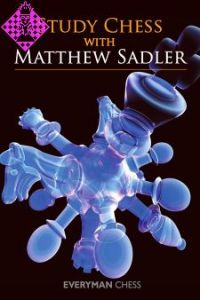 Study Chess with Matthew Sadler19,95 €
Study Chess with Matthew Sadler19,95 € -
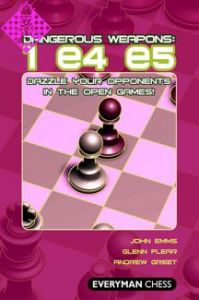 1. e4 e5 - Dangerous Weapons23,50 €
1. e4 e5 - Dangerous Weapons23,50 € -
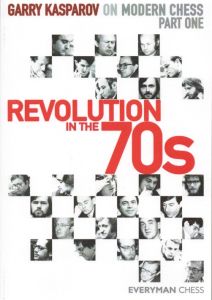 Revolution in the 70s (pb)28,50 €
Revolution in the 70s (pb)28,50 € - Mehr von Everyman

